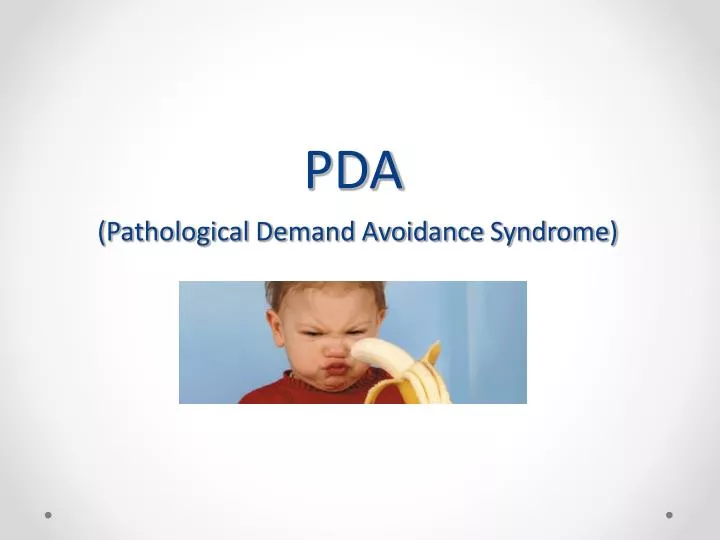

It’s all because said goal is perceived as a demand. One of the biggest signs is that they lack the ability and drive to achieve their own goals and do what they enjoy. This will include short conversations, avoiding social situations altogether, keeping away from activities, making excuses, and lying. For example, they may blatantly avoid being met with demands. You’ll also notice certain behaviors in people with PDA. If they do accept the task at hand, however, there’s a good chance it will never be met. The anxiety of meeting such demands just becomes too much and things just fall apart. Even if they greatly want what’s on the other end, there’s a great chance that it won’t happen. Even still, we can make educated conclusions that lead us down the right path based on prior cases, so we have a few telltale signs.Īs stated before, those with PDA will constantly refuse to meet expectations, no matter how basic. Because the DSM-5 does not recognize it as a condition (or it at least doesn’t separate its specific symptoms from ASD in general) experts still debate on what truly defines it. There are certain symptoms that one might have PDA, though there’s nothing concrete. It’s an anxiety so extreme that even the most basic of requests can seem daunting. Even if the request is going to help them in some way, there’s a certain anxiety that blossoms due to being met with expectations. It’s often seen as someone being lazy, a procrastinator, or just lacking work ethic in general. School, work, friends, family it doesn’t matter. That means refusing to do tasks, meet expectations, or not cooperating with basic requests on an extreme level. That causes a difficulty in one’s basic ability to function and socialize. However, there is a problem with a drive for too much autonomy. It’s a great motivation, a feeling of freedom, and an essential part of who we are as people. What does that mean, though?Īutonomy, or the right to be able to govern yourself, is what keeps many people running. The reason it’s often called Persistent Drive for Autonomy by the autistic community is because it’s considered a more handy description. What is Pathological Demand Avoidance/Persistent Drive for Autonomy?
PATHOLOGICAL DEMAND AVOIDANCE IN ADULTS SYMPTOMS HOW TO
If you are looking for a guide about PDA in children or how to discipline a child with PDA, please use the search feature on our homepage. I’ll tell you everything you need to know about PDA in adults, the symptoms, and how best to properly help them with any issues.

Well you’re on the right track, as learning more is always the first right step. So what is it, exactly? What should you do if you know someone who has the condition?

Those with PDA, children and adults, have their ability to respond to demands and expectations fairly handicapped. People of the autistic community have preferred to call it Persistent Drive for Autonomy, but no matter the name, the facts remain the same. I wouldn’t be surprised if you haven’t, as it’s a relatively new diagnosis that isn’t actually recognized by the DSM-5, but it’s considered by experts to affect a subset of people on the autism spectrum. I’m talking about Pathological Demand Avoidance.

Ever heard of PDA? No, not Public Displays of Affection.


 0 kommentar(er)
0 kommentar(er)
